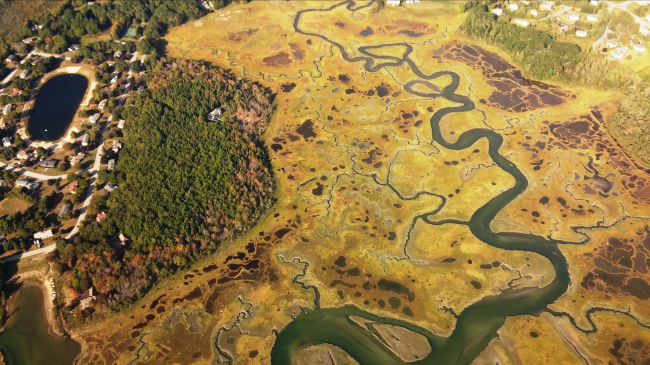Ocean and Great Lakes economy is an important piece of total U.S. economy
The nation’s ocean and Great Lakes economy grew at nearly three times the U.S. as a whole from the pre-recession levels of 2007, fueling growth across the country, according to a new NOAA report.

The Port of Los Angeles. In the U.S., where over half live along the coast and more than 78 percent of overseas trade by volume comes and goes along our marine highways, the health of the coasts is intricately connected to the health of the nation's economy. (Image credit: NOAA)
The latest economic figures show inflation-adjusted gross domestic product (GDP) from the ocean economy grew 15.6 percent from 2007 to 2014, outpacing the overall U.S. economy, which grew at 5.8 percent.
The ocean economy includes businesses dependent on ocean and Great Lakes natural resources. This essential segment of the U.S. economy also employed more than 3 million people—more than crop production, telecommunication and building construction combined—with approximately two thirds of those employees in the tourism and recreation sector.

The report, U.S. Ocean and Great Lakes Economy, 2014, from NOAA’s Office for Coastal Management, looks at data from the years 2005 to 2014, the most up-to-date data available from the U.S. Bureau of Labor Statistics, Bureau of Economic Analysis, and the Census Bureau. However, researchers began their analysis by looking at economic statistics from 2007, the last normal year before the recession, as their starting point to gauge post-recession recovery.
“Our communities rely heavily on the ocean and Great Lakes for tourism, jobs, businesses, transportation and recreation,” said W. Russell Callender, Ph.D., assistant NOAA administrator for the National Ocean Service. “NOAA’s National Ocean Service is committed to providing science-based tools and solutions to support the continued growth of the nation’s coastal communities and economies.”
The ocean and Great Lakes economy also created 75,000 new jobs, growing by 2.5 percent from 2013 to 2014, compared to overall U.S. economic growth of 2.0 percent. The jobs created were in six areas dependent on natural resources: marine construction, marine transportation, offshore mineral extraction, ship and boat building, living resources, and tourism and recreation.
“There is no denying the important role the ocean and Great Lakes play in our nation’s overall economic health,” said Jeffrey Payne, Ph.D, director of NOAA’s Office for Coastal Management. “This report highlights the critical role the ocean and Great Lakes play in many aspects of the U.S. economy.”
In 2014 alone, the ocean and Great Lakes supported:
-
149,000 business establishments
-
3.1 million employees
-
$123 billion in total wages
-
$352 billion in gross domestic product
The report also shines a light on the connections individual sectors have to the Great Lakes and marine resources. Some industry highlights from the report:
-
Tourism and recreation was the largest sector in terms of ocean economy employment, providing more than 2 million jobs.
-
Offshore mineral extraction sector led the ocean economy in wages and GDP, paying out more than $25 billion in wages, and contributing $152 billion in goods and services.
-
Four of six sectors paid an average wage per employee above the national average of $51,000 – marine construction ($69,000), ship and boat building ($66,000), marine transportation ($72,000), and offshore mineral extraction ($146,000).
NOAA’s Digital Coast program provides a host of economic data for counties, states, regions and the nation in a wide variety of formats. These data provide nationally consistent information to understand and manage the diverse economic demands placed on our ocean and Great Lakes. Coastal economic data are available at coast.noaa.gov/digitalcoast/topics/economy.html.
Media contact:
Keeley Belva, 240-533-0940
Alicia Clarke, 240-533-0935



